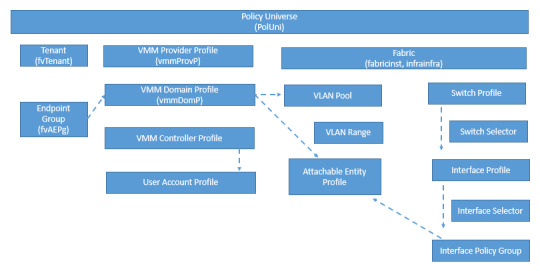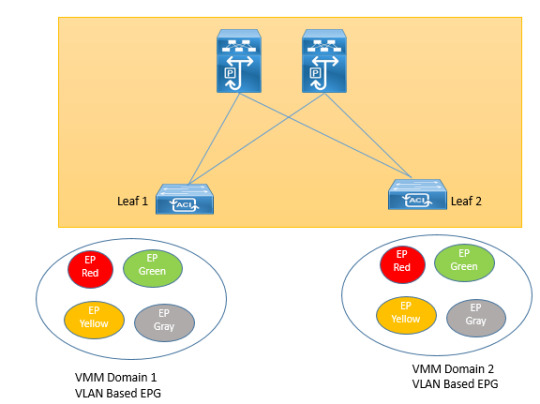#ITIntegration
Explore tagged Tumblr posts
Text
IT Integration Lessons from the Aviation Industry
By RAVINDRA BALAJI PUTTEWAR
Aviation is one of the most tightly regulated, logistically complex, and customer-sensitive industries in the world. And yet—somehow—it works. Flights take off and land (mostly) on time. Bags travel across continents and end up in the right hands. Maintenance teams, air traffic controllers, and booking agents work in synchrony, often in different time zones and on different systems.
How? Integration.
At ADITI IT SERVICES PVT LTD, based in India, we often reference aviation when designing IT solutions for other sectors—whether it's healthcare, manufacturing, or finance. Why? Because the aviation industry has mastered something that many others struggle with: getting disparate systems, tools, and people to talk to each other without chaos.
Let’s take a closer look at the lessons we can all borrow from aviation when it comes to IT integration.
1. Interoperability Isn’t Optional – It’s Mission Critical
Airlines don’t get to say, “Sorry, our baggage system doesn’t talk to the boarding gate software.” Everything has to work—together, in real time, across platforms.
From booking systems and crew rosters to maintenance logs and fuel records, aviation IT is a masterclass in interoperability. APIs, middleware, and data translation layers are not “nice to have”—they’re essential.
Lesson for other industries: Build your systems with integration in mind. If your CRM can’t sync with your ERP, or your HR software doesn’t talk to your payroll tool, you’re creating digital silos that will slow down your business.
At ADITI IT SERVICES PVT LTD, we've helped clients implement integration layers that connect legacy systems to modern platforms—so that their old tools don't block new progress.
2. Real-Time Data Saves Time—and Lives
In aviation, seconds matter. Flight paths need to be adjusted on the fly. Maintenance alerts must be acted on immediately. And delays cascade if not communicated in real time.
This level of urgency forces systems to prioritize live data feeds, not weekly reports.
Lesson for other industries: Don’t wait for post-mortems. Use dashboards, live alerts, and analytics to detect issues before they impact operations. Whether you're managing a supply chain, a hospital, or a bank—real-time data is no longer a luxury. It’s the new baseline.
We worked with a logistics company to introduce real-time shipment tracking across states using integrated APIs between fleet GPS systems, traffic feeds, and delivery apps. Result? Customer complaints dropped, and efficiency soared.
3. Redundancy Is Not Waste—It’s Strategy
Aircraft systems have backups for their backups. If one sensor fails, another takes over. This philosophy extends to IT as well—redundant servers, failover networks, dual databases.
Lesson for other industries: Business continuity isn’t just for “critical” operations. Everyone needs disaster recovery planning. Can your email survive a data center outage? What if your billing system goes down on payroll day?
At ADITI IT SERVICES PVT LTD, we help businesses design IT architectures that assume failure will happen—and build resilience into every layer.
4. Global Standards Enable Seamless Collaboration
Aviation runs on standards. From airport codes to communication protocols (like IATA or ICAO), everyone speaks the same digital language. That’s what makes international cooperation possible.
Lesson for other industries: Avoid proprietary traps. When you invest in IT, choose platforms that comply with global standards—whether it’s cybersecurity (ISO 27001), service quality (ISO 9001:2015), or software compatibility.
We've seen businesses lose time and money trying to force proprietary tools into environments they weren’t built for. Standards protect you from that trap.
5. Human Factors Still Matter
Despite all the automation, aviation IT still accounts for human workflows. Pilots, engineers, and crew need user-friendly systems with clear instructions and fallback options.
Lesson for other industries: Don’t build for machines—build for people. A beautifully coded system that confuses your staff is a failed system. Interfaces should be intuitive. Processes should have accountability. Training should be part of the rollout.
When we deploy integrated solutions at ADITI IT SERVICES PVT LTD, we never stop at “it works.” We ask: “Can your team use it without needing a manual every time?”
A Global Stage for Lessons in Innovation
Our appreciation for aviation’s IT mastery is part of why we’re proud to share that ADITI IT SERVICES PVT LTD has been nominated for the 2025 Go Global Awards, hosted by the International Trade Council this November in London.
This event brings together business innovators from every corner of the world—people solving complex, cross-border, cross-discipline challenges. Aviation may be one industry, but the lessons it offers apply everywhere. And we’re honored to bring these conversations to the global stage, representing India’s vision for connected, resilient enterprise infrastructure.
Final Thought
Integration is often invisible—but it’s what holds everything together. And when it’s done right, it feels seamless, reliable, even... ordinary. Like a flight that lands on time.
Let’s take a page from the aviation playbook—not just to fly higher, but to operate smarter, safer, and more connected.
#ITIntegration#AviationTechnology#DigitalResilience#SmartSystems#EnterpriseIT#MiddlewareSolutions#AditiITSolutions#RavindraBalajiPuttewar#IndiaTechLeadership#GoGlobalAwards#InteroperabilityMatters#RealTimeData#BusinessContinuity
0 notes
Text

Learn to integrate Cisco ISE with Active Directory for streamlined, secure user authentication and policy management within your network environment. https://www.dclessons.com/ise-ad-integration
#CiscoISE#ActiveDirectory#NetworkSecurity#UserAuthentication#PolicyManagement#ITIntegration#CyberSecurity#NetworkManagement
0 notes
Text
Higher Education IT Consulting Amidst Challenges
In the dynamic landscape of higher education, technological advancements have become integral to institutional success, demanding a strategic approach towards ITintegration and optimization. Higher education IT consulting has emerged as a critical facet, navigating the sector through a myriad of challenges. With an ever-evolving digital sphere, educational institutions grapple with the need to balance innovative technologies, data security, financial constraints, and evolving pedagogical requirements. The rapid pace of technological change necessitates expert guidance to effectively harness these advancements for educational enhancement and administrative efficiency. Consultants specializing in higher education IT play a pivotal role in assisting institutions to align their technological initiatives with organizational goals, ensuring seamless integration, cost-effectiveness, compliance with regulations, and an optimal learning experience for students and educators. This article delves into the intricacies of higher education it consulting, exploring the current challenges faced by educational institutions and the strategies employed by consultants to drive transformative change in this domain.
The Evolving Landscape of Higher Education Technology
In recent years, higher education IT Consulting has witnessed a transformative shift in its technological landscape. The integration of cutting-edge technologies has become integral to delivering quality education and enhancing the overall learning experience. However, this rapid evolution has brought forth a plethora of challenges that demand the expertise of IT consultants specialized in higher education. From adapting to changing learning models to ensuring data security and streamlining administrative processes, IT consultants play a pivotal role in navigating this dynamic and complex environment.
Aligning IT Strategies with Educational Goals
In an era where educational institutions are embracing digital transformation, the alignment of IT strategies with educational goals is paramount. IT consultants must collaborate closely with academic and administrative stakeholders to understand the unique objectives and vision of the institution. Developing IT strategies that seamlessly integrate with these objectives not only enhances efficiency and productivity but also ensures that technology is leveraged to empower both educators and learners in achieving their educational goals.
Data Security and Compliance in Higher Education IT
The safeguarding of sensitive data and adherence to regulatory compliance standards have emerged as critical concerns within higher education IT. Educational institutions house a vast amount of confidential information, including student records, financial data, and research findings. IT consultants specializing in higher education must devise robust data security frameworks and ensure compliance with laws such as FERPA and GDPR. Balancing accessibility with security, and educating stakeholders on best practices, becomes fundamental to maintaining trust and upholding the institution's reputation.
Leveraging Emerging Technologies for Educational Enhancement
The rapid advancements in emerging technologies, such as artificial intelligence, virtual reality, and data analytics, present immense opportunities for educational enhancement. IT consultants play a pivotal role in identifying and integrating these technologies into the educational ecosystem. By harnessing the potential of these tools, higher education institutions can optimize learning methodologies, personalize the learning experience, and generate valuable insights for continuous improvement.
Addressing Budgetary Constraints and Resource Optimization
Higher education institutions often face budgetary constraints, necessitating a judicious allocation of resources. IT consultants specializing in higher education are tasked with optimizing technology investments to align with budget limitations. This involves identifying cost-effective solutions, negotiating vendor contracts, and advising on prioritizing IT initiatives that deliver maximum impact. By striking a balance between innovation and fiscal responsibility, consultants enable institutions to achieve their technological objectives within budgetary parameters.
Facilitating Change Management and Training Initiatives
Implementing new IT solutions within a higher education setting requires effective change management strategies and comprehensive training initiatives. IT consultants are instrumental in guiding institutions through these transitions by facilitating change management processes that minimize resistance and maximize adoption. Additionally, they design and conduct training programs to upskill staff and students, ensuring the seamless integration and utilization of new technologies.
Building Future-Ready Infrastructures and Scalability
As higher education institutions plan for the future, building scalable and adaptable IT infrastructures is critical. IT consultants are essential in devising strategies that anticipate future technological advancements and growth, ensuring that the institution's IT infrastructure remains agile and responsive. By creating a foundation that can readily accommodate future changes and expansions, consultants pave the way for educational institutions to stay ahead in the dynamic landscape of higher education IT.
Conclusion
In conclusion, navigating the landscape of higher education IT consulting amidst its myriad challenges necessitates a multifaceted approach and a commitment to adaptability and innovation. The rapid evolution of technology, coupled with the growing complexity of educational institutions, demands a proactive and flexible consulting strategy.
0 notes
Text
Free RDP Hosting offers seamless integration with your existing IT infrastructure. Effortlessly connect your remote desktop solutions with your servers, applications, and databases. Experience the convenience of unified systems. Signup Here - https://rdphostings.com/

0 notes
Text
Job Rotation Feasibility with the Advent of IT Integration
In the modern world, the role of IT integration is highly relevant due to the interconnected devices and infrastructure all around us. IT (Information Technology) integration is an engineering process of bringing together the component sub-systems into one system. This ensures that the subsystems function together as a system.
In information technology, specifically, it is the process of linking of various computer systems as well as software applications both physically and functionally. It integrates a variety of discrete systems by using several techniques such as computer networking, enterprise application integration, business process management, and manual programming.

The aim is to make the entire software system behave like one. IT integration in an organization increases the overall value of the system for the end customer in terms of improved quality and performance of products or services. The same applies to the workforce as well. IT integration provides significant value enhancement to the workforce in the organization due to the reduction in time delays and operational costs. Job rotation is one such field which can immensely benefit with the advent of IT integration.
Job rotation refers to a management approach where employees are made to shift between various job functions or assignments in regular intervals of time in order to expose them to various facets of work in an organization. It helps the organization in testing, employee skills and competencies and accordingly places them in a function best fit to their abilities. It also allows developing a contingency plan or succession plan in the organization where all employees are able to do all the jobs and can replace anyone if the need arises. Also, employing job rotation approach benefits the organization, as it develops empathy among the employees for each other. As one employee in marketing understands the challenges of another employee in sales, they work in tandem more harmoniously. This leads to a better work environment. Finally, it helps employees enhance their job-related skills and become more employable. It also reduces job monotony that many organizations with rigid work structures suffer from.
All these benefits can be enjoyed only when the systems and processes in the organization support job rotation as a practice. We have to remember that job rotation involves one employee going through new functions in a regular manner. This means that the person at the helm of a job responsibility keeps changing. When people keep changing, the processes need to be interconnected to pass on the information that is accessible by the new person who replaces the old one. To facilitate smooth transition between employees, IT systems should be integrated in such a way that activities in a function are also integrated with other functions and visible to all. This helps all the employees stay in tune with the various processes in an organization.
The organization can also use job rotation tools integrated with various business processes that can compose a knowledge grid and can match the qualifications of the various employees with a job fitment. This helps a company to find the right employee to move into the right role as well as track their performance. In fact, performance management systems can be integrated with job rotation tools for the HR function to keep tabs on the job rotation of various employees, their performance and career progression.
As we know, IT integration is essential to project management, which involves subsets of activities pertaining to various functions of an organization. Job rotation can be implemented in project management as well, with the company giving exposure to other roles to their employees through specific projects. Handling projects require the employees to manage a spectrum of responsibilities. It requires for them to keep a tab on various processes at the same time, so that project completion can be achieved in the desired time and within the budget. They need to closely watch over the progress and movement of the project on different levels. System level integration of various functional processes helps them keep their eyes on it and intervene when needed. The concept of job rotation integrates all the employees in a mutually dependent scenario within time-limits which can make the process vulnerable to human error like a memory lapse and non-transference of process related knowledge. Integrated systems help employees keep in touch with their old processes as they work on new ones. It allows them to share their information anytime. Job rotation is a win-win strategy for any organization. However, it needs robust processes to support it. Job rotation through its various benefits allows people to sync with each other. It has benefits for both the organization as well as the employees. However, it can be implemented only when the organizational systems are integrated in such a way that they support the employees in carrying out the tasks in a frequently changing environment.
1 note
·
View note
Photo

This amazing piece of technology is a life saver and I wouldn’t make it through these engineering classes without it. 17/365 #ti89 #calculator #texasinstruments #itintegrates #engineeringstudent #nerd (at West Houston Institute) https://www.instagram.com/p/BswgGkJgagi/?utm_source=ig_tumblr_share&igshid=1dvp9u09udj5t
0 notes
Photo

Just Pinned to Vape: The Fuchai Duo 3 is the latest in the series of popular Fuchai mods from Sigelei. It utilizes two 18650 cells, itintegrates a fully upgradeable, comes with a range of temperature modes, is capable of 175 watts of output, is built with a full color screen and looks modern. http://ift.tt/2q4wVpf
0 notes
Text
Master the art of integrating VMware with Cisco ACI. Our detailed tutorial provides insights into the configurations and benefits of this powerful combination, enhancing your data center's efficiency and scalability. https://www.dclessons.com/integrating-with-vmware


#VMwareIntegration#Virtualization#DataCenter#CloudComputing#NetworkManagement#CiscoACI#ITIntegration#NetworkingSolutions
0 notes
Photo

Just Pinned to Vape: The Fuchai Duo 3 is the latest in the series of popular Fuchai mods from Sigelei. It utilizes two 18650 cells, itintegrates a fully upgradeable, comes with a range of temperature modes, is capable of 175 watts of output, is built with a full color screen and looks modern. http://ift.tt/2oDndZS
0 notes
Photo

Just Pinned to Vape: The Fuchai Duo 3 is the latest in the series of popular Fuchai mods from Sigelei. It utilizes two 18650 cells, itintegrates a fully upgradeable, comes with a range of temperature modes, is capable of 175 watts of output, is built with a full color screen and looks modern. http://ift.tt/2q6wNF5
0 notes